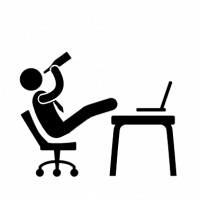New chainrings on a 5750 double chainset - which side faces out?
The 50 obviously goes branded side out.
The 34 has got divots on the branded side which fit the bolt head. So the branding goes frame side, right?
The tooth profile is almost symmetrical, perhaps it doesn't matter.
If anyone has a cleaning double chainset to check I'd be grateful.
Comments
-
Looking at this catalog shot of a 105 chainset, I think I must be right. Didn't look weird 'til I tried fitting it though.
https://www.sjscycles.co.uk/chainsets/165-shimano-105-fcr7000-11-speed-double-chainset-black-5034t/0 -
The shift helper pins face in.0
-
In the early days when 5 speed bicycles became 10 speed with the addition of an extra chainring up front, the chainrings could go either way around. Nowadays however this is no longer the case. Shifting (the chain) from one gear to another has become much more precise and quicker. This is due to better design and engineering. There are now ‘guides’ built onto the side of a chainring to help the chain on its journey from one chainring to another. A dual chainring is the easiest setup, because the chain can only move in one direction from each chainring. A triple has an added complication that from the centre ring the chain can go up or down. But the principle is the same.
First the outer (big) chainring. The logo and marking usually face outwards. The chain guides must be on the inside, facing the smaller chainring. There is also one large protruding pin (drop-pin) that faces outwards from the large chainring, this aligns with (behind) the pedal crank. To prevent the chain from getting trapped and damaged should it overshoot while changing.
The inner ring, a little harder to identify inside and outside (easier on a triple). But there are ways. The distance between the two rings is critical. There should not be enough room for the chain to get wedged between the two chainrings. On some chainrings there is a small arrow on the outer part just below the teeth. This arrow should be facing outwards and be positioned behind the pedal crank. Some of the teeth of the inner are also shaped to help the chain transfer up to the larger chainring. Sometimes the shape of the mounting point is an indicator.
Drop pin on large ring
Guides on large ring
Guide in use
Arrow on inner
Inner ring mount shaping
0 -
Yep that’s it, I didn’t know the official names for the little helper pins, every day’s a school day.Charlie_Croker said:In the early days when 5 speed bicycles became 10 speed with the addition of an extra chainring up front, the chainrings could go either way around. Nowadays however this is no longer the case. Shifting (the chain) from one gear to another has become much more precise and quicker. This is due to better design and engineering. There are now ‘guides’ built onto the side of a chainring to help the chain on its journey from one chainring to another. A dual chainring is the easiest setup, because the chain can only move in one direction from each chainring. A triple has an added complication that from the centre ring the chain can go up or down. But the principle is the same.
First the outer (big) chainring. The logo and marking usually face outwards. The chain guides must be on the inside, facing the smaller chainring. There is also one large protruding pin (drop-pin) that faces outwards from the large chainring, this aligns with (behind) the pedal crank. To prevent the chain from getting trapped and damaged should it overshoot while changing.
The inner ring, a little harder to identify inside and outside (easier on a triple). But there are ways. The distance between the two rings is critical. There should not be enough room for the chain to get wedged between the two chainrings. On some chainrings there is a small arrow on the outer part just below the teeth. This arrow should be facing outwards and be positioned behind the pedal crank. Some of the teeth of the inner are also shaped to help the chain transfer up to the larger chainring. Sometimes the shape of the mounting point is an indicator.
Drop pin on large ring
Guides on large ring
Guide in use
Arrow on inner
Inner ring mount shaping
0 -
Great post thanks. I hadn't seen there was rotational alignment too, I'll check that while they're still clean.0



